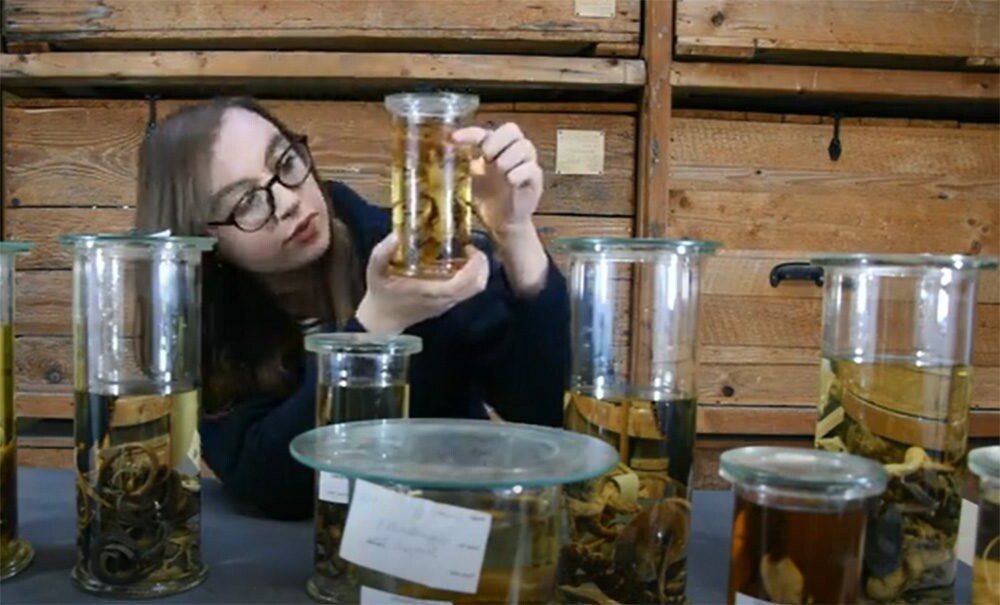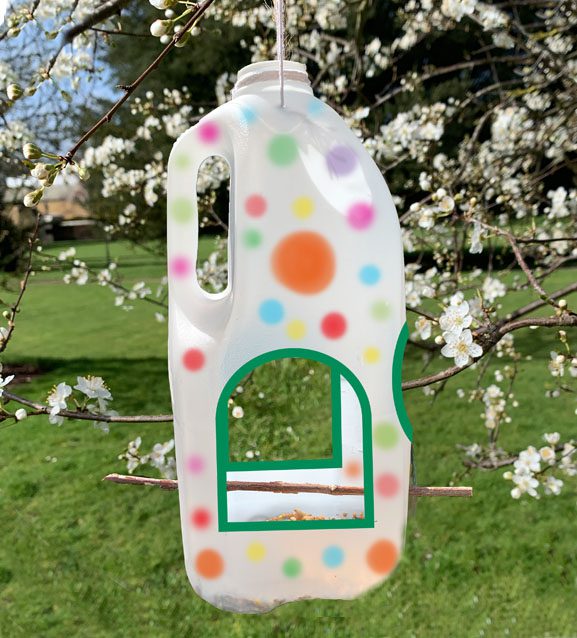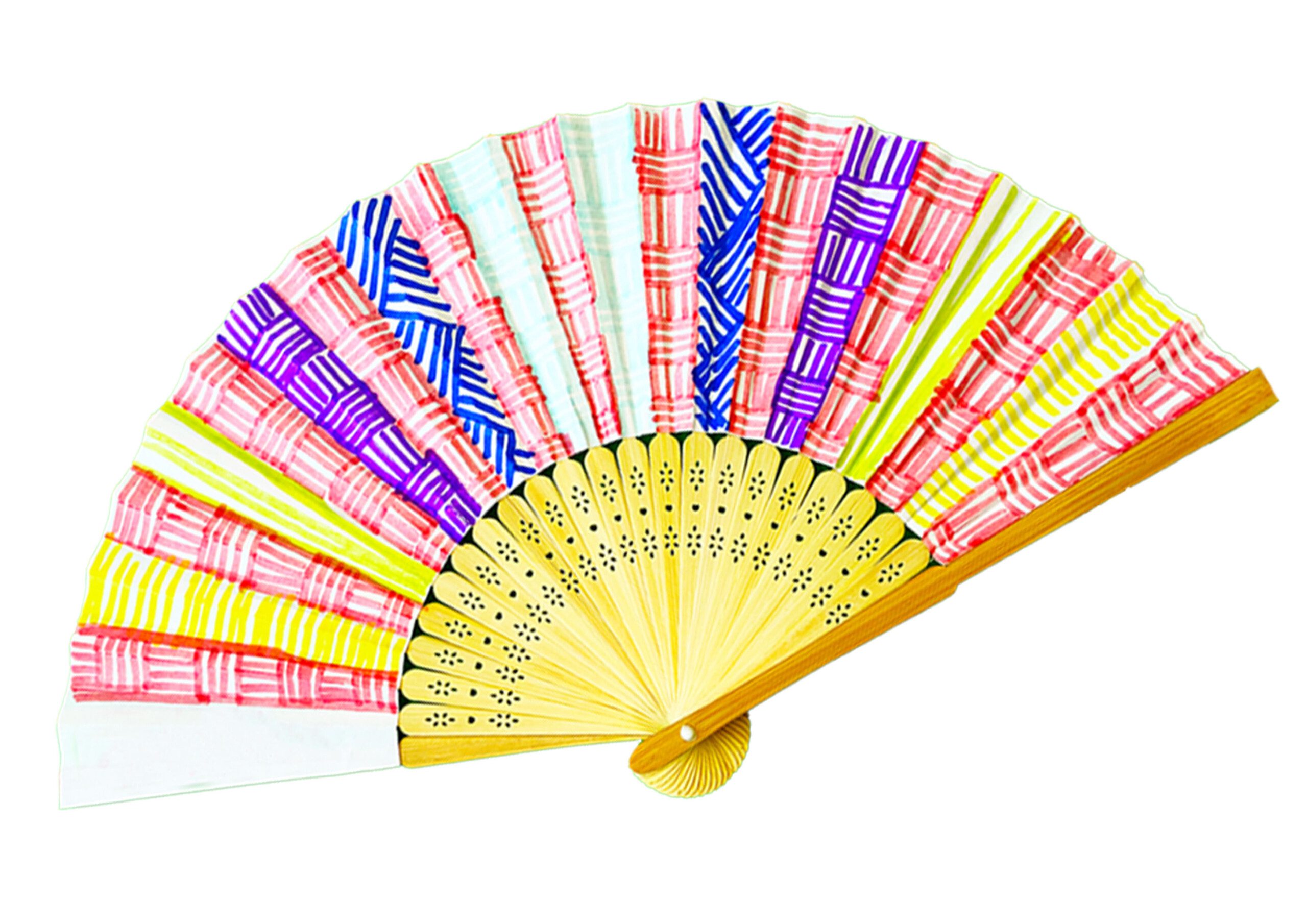Join Becky for a sneaky behind-the-scenes peek at our wet specimen collection. Download our #MuseumMake craft activity and create your own ‘soggy specimen’ in a jar.
What is a wet specimen?
A wet specimen is a form of taxidermy. It is a method of preserving the whole body of an animal by fixing it into a suspended state in a jar containing a liquid. Each specimen has a label which records all the important information relating to the object inside the jar. Details include where and when the specimen was found and whether male or female. Without their labels, specimens would be scientifically worthless.
Collectors and scientists have stored animals in ethanol-filled jars since the 17th century (1600s). Many natural history museums across the world have built up large ‘wet’ collections which can be used for research by scientists.
How is a wet specimen made?
Specimens are first prepared by being injected and soaked in a fixative such as formalin or a high percentage ethanol. They are then bathed or rinsed before being placed into a jar containing a mixture of 70% alcohol and 30% water. This liquid protects the specimen from decay and makes them available for scientific research over a long time.
In the past, formalin was used as a preserving liquid until it was recognised to be dangerous to health: it causes cancer. These days, although a less dangerous substance called ethanol is used, it has to be used very carefully as the substance is toxic to humans. Also, ethanol contains 70% alcohol and is highly flammable so it must be stored very carefully to avoid collections going up in flames.
Why were wet specimens made?
Frederik Ruysch, who lived in The Netherlands in the 1600s, was a professor of botany and anatomy at the University of Amsterdam: he studied plants and the human body. By creating wet specimens, he was able to improve his study of the human body and look more closely at muscle, tissue and blood vessels to discover causes of death and disease.
How are wet specimens used today?
Scientists can use wet specimens for study in many ways. They are able to study preserved animals, collected hundreds of years ago, which are now extinct. This allows them to examine the way some species have evolved over time to cope with changes in habitat.
By studying changes in biodiversity and ecosystems over time, scientists can make predictions to help us preserve and conserve the world around us.
What next?
You could create your own soggy specimen with #MuseumMake. Download the worksheet below.


